St. Vincent’s Swimming: A Small Nation with Big Dreams
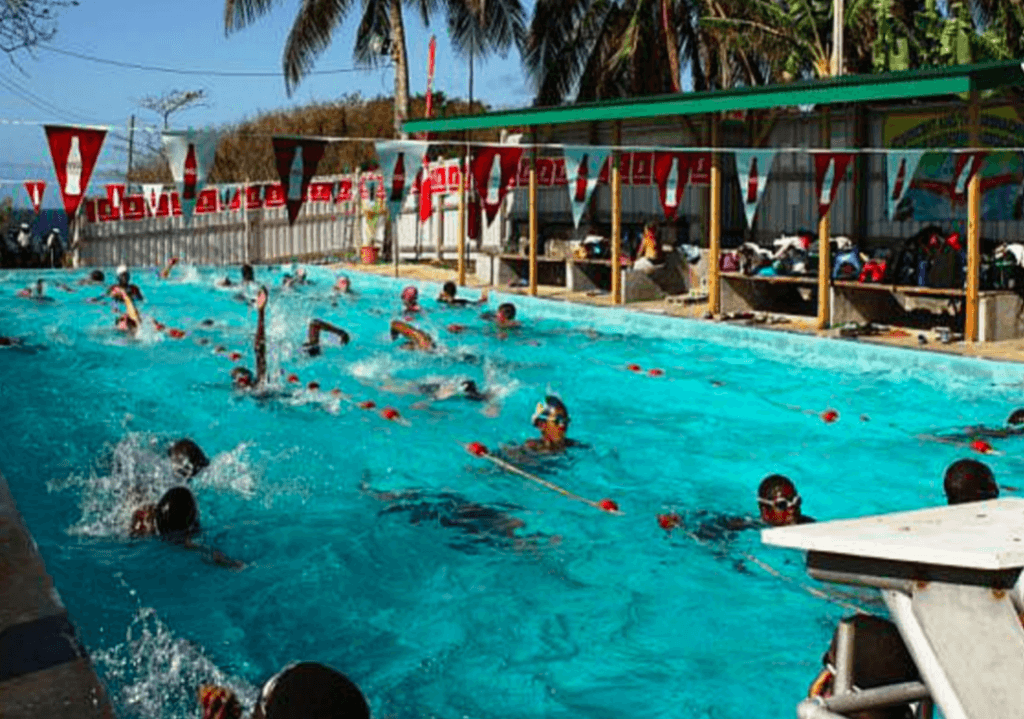
By Daniela Navarrete, Swimming World College Intern.
“Do what you can, with what you have, where you are,” said former US President Theodore Roosevelt. Some swimmers are luckier than others, growing up with resources at their fingertips. They have several teams and facilities from which to choose, while others of the same age and skill level barely have access to one pool. But one thread ties each of these swimmers together: they all share the same big dreams and passion for the sport. One island nation changing the tides for aspiring young swimmers is St. Vincent and the Grenadines.
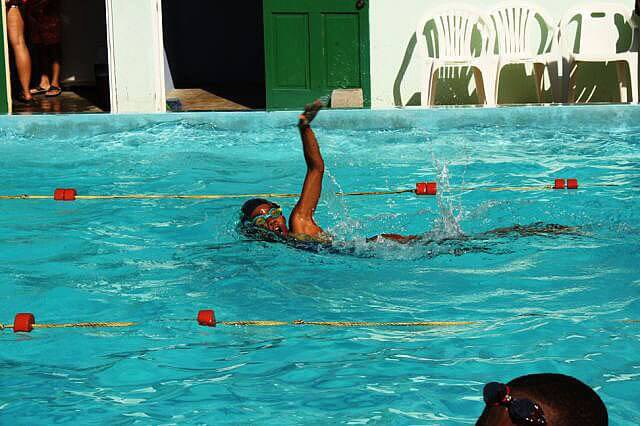
Photo Courtesy: St. Vincent and the Grenadines Swimming Federation
Athletes set on the sport of swimming on the island of St. Vincent had little luck with garnering support until recent years. The country’s swimming federation was created just nine years ago. Before that, the sport had little to no systematic support. Despite their past, current Vincentian swimmers have big aspirations to put their country out in the swim map.
But first of all, where is St. Vincent?
Location
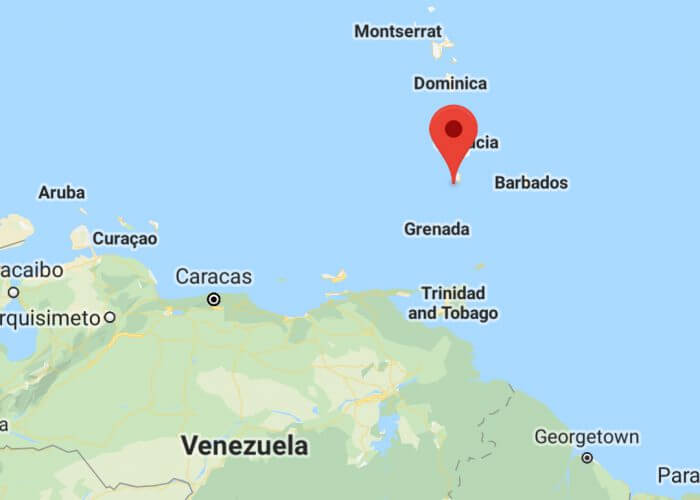
Photo Courtesy: Daniela Navarrete
St. Vincent and the Grenadines is located north of the island of Grenada – just above Trinidad and Tobago and Venezuela – in the Caribbean Sea. Its territory includes 32 small islands, although most remain uninhabited. The nation’s main island, St. Vincent, is approximately twice the size of Washington, D.C. The population of the entire country is of 110,530 people, according to the latest estimates by the United Nations from 2019. Just as few the people were the opportunities and facilities available to swim competitively.
Swimming in a Developing Nation
St. Vincent is considered a developing country, which is a nation with a low living standard. Due to their economic status, it is difficult to allocate resources not only to swimming but also to sports in general. Important areas such as education are in high need of resources as well.
The National Sports Council (NSC) oversees the development and maintenance of sports facilities in the country. However, according to an article by the Vincentian (the national newspaper of St. Vincent and the Grenadines), athletic teams are never provided with proper annual allocation to meet their needs. Facilities have fallen into disrepair unless fixing them fit a political agenda.
It is ironic to think that a nation surrounded by water would struggle to support aquatic sports. Access to clean and safe facilities in their recent past was difficult. The only pools available were typically at hotels or private homes. Therefore, only those who could afford private lessons and access to a pool were able to learn to swim. “I started swimming at age five with a private coach at my home pool because living on an island, water safety was a priority for my parents,” shares Shane Cadogan (18), current member of the St. Vincent and the Grenadines’ National Team.
The Beginning of a Swimming Federation
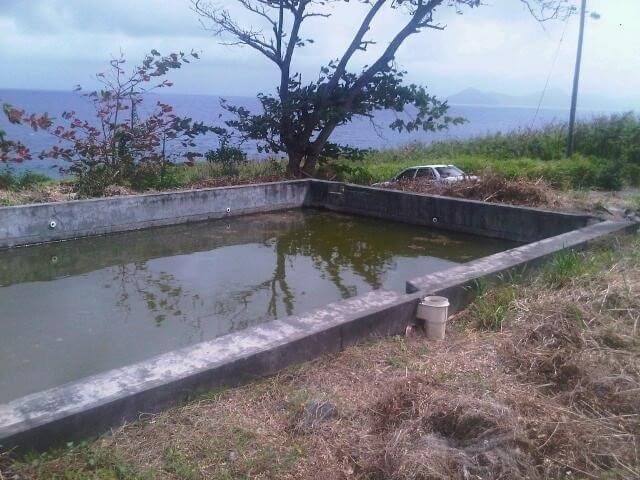
The old, run-down pool in St. Vincent. Photo Courtesy: Stephen Joachim
To address the weak support of swimming, the current federation’s president, Stephen Joachim, points to the lack of history regarding exactly when competitive swimming started in the island nation. They have no shoulders in which to stand on. However, the community was determined to begin writing the script. In 2008, a group of parents and coaches rallied together to address the urgent need to give kids a better opportunity to develop and compete. Andre Cadogan, President of the former Saint Vincent and the Grenadines (SVG) Amateur Swimming Association, led the charge.
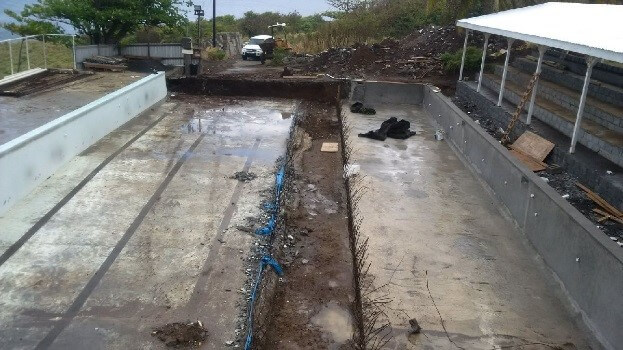
Aerial view of the poor conditions of facilities in St. Vincent. Photo Courtesy: Stephen Joachim
Cadogan and his team pressured the government to allow their committee to repair and use an existing public pool. The pool was 24.3 meters in length and just large enough to accommodate three lanes. Cadogan and his committee raised significant funds and managed to clean, renovate and make the facility useable.
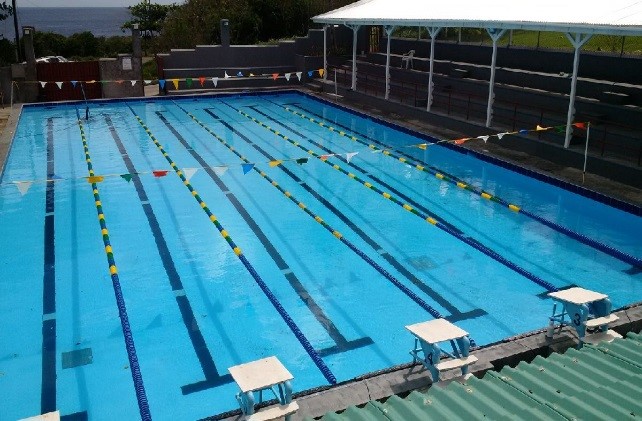
The renovated facility in St. Vincent. Photo Courtesy: Stephen Joachim
After a couple of years and a lot of work, The St. Vincent and the Grenadines Swimming Federation (SVGSF) was officially launched on May 22, 2010. According to Joachim, SVGS currently has over a hundred competitive swimmers registered with several more in learn-to-swim programs.
International Appearances
Saint Vincent and the Grenadines has participated in several regional and international events since the start of SVGS, from local events such as the CARIFTA Caribbean Championships to the international stage at World Championships.
The SVGS sent a national team to Worlds for the first time in December 2012, when Short Course World Championships were hosted in Istanbul. The country sent six swimmers to compete, including Vincentian Olympian and incoming Howard University freshman swimmer Nikolas Sylvester.
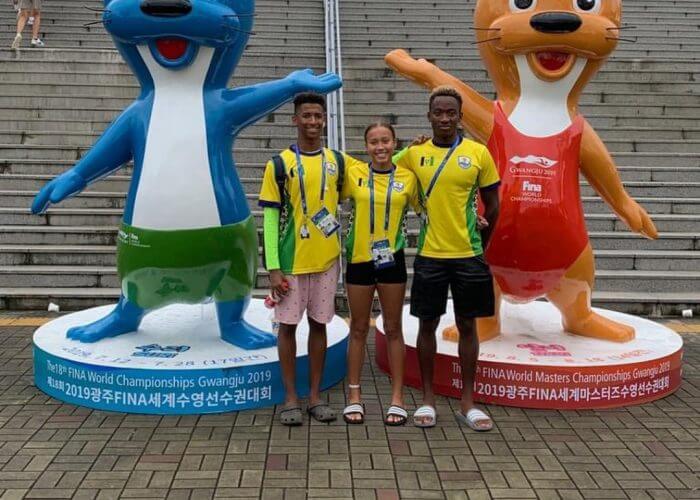
Mya de Freitas, Alex Joachin and Shane Cadogan pose at the 2019 FINA World Championships. Photo Courtesy: Alex Joachim
The most recent international appearance of Saint Vincent was in Gwangju earlier this summer. Mya de Freitas, Alex Joachim and Shane Cadogan each swam two events and smashed four national records in total.
The Future for Vincentian Swimming
After almost a decade since the creation of the swimming federation, the country continues to lack infrastructure to further develop the sport. According to an article by the Vincentian from 2018, The New Democratic Party of St. Vincent planned to build a National Aquatic Centre in hopes to attract national and international competitions and to grow the sport locally. Nonetheless, no such construction has yet to begin.
“It is going to be very difficult for swimming to grow in a small country, since we only have one six-lane 25-meter pool. We think that continued focus on learn-to-swim programs combined with our small group of competitive swimmers will allow us to keep the sport alive.” -Stephen Joachim
The goal for most national teamers is to take full advantage on the opportunities given, such as attending large international competitions. “Although most of the times we get to go because of universality positions, we want to perform our best and display our country’s progress,” explains Shane Cadogan. Almost every major international swimming event has qualifying time standards swimmers must achieve to be eligible to compete. Yet, for some third world or developing countries such as St. Vincent, those standards seem unreachable. Luckily, the universality rule at global meets allows these teams to take one or sometimes two swimmers per gender to participate.
Influence on Younger Generations
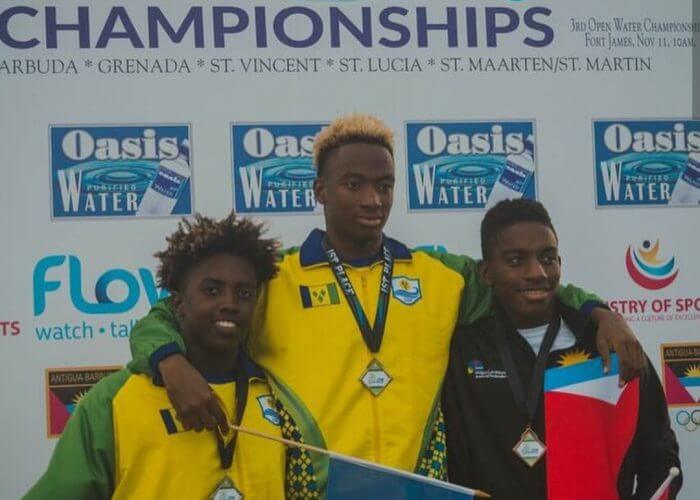
Photo Courtesy: Shane Cadogan
Cadogan grew up in the new surge of Vincentian swimming, holding on to his dreams and earning his way to the national team. Swimming competitively since age 10, Cadogan competed at his first international meet as part of the St. Vincent’s National Team at the 2014 Commonwealth Games in Scotland when he was just 13.
Cadogan acknowledges the rising swimming revolution in his country and hopes to inspire the upcoming generation to go even further in the sport. “As national swimmers in such a small island, it is always heartwarming to hear coach saying younger kids mentioned they wanted to be like myself and my teammates,” he says.
Never underestimate the power of athletic identity and history to inspire younger generations to push the boundaries of what is believed to be possible. International swim stars such as Michael Phelps and Natalie Coughlin grew up with swim idols in which to aspire to and follow. In St. Vincent, the current generation of national team members are writing swim history to be the shoulders the next generation will stand on. They are the first swimmers – the pioneers – who younger kids are looking up to.
“I know we are making an impact. We didn’t have the older swimming influence when we were younger. It was a new sport, but now it is one of the many things I enjoy swimming for – to inspire our younger ‘brothers and sisters.’” -Shane Cadogan.
The country is slowly but surely moving forward in order to improve the sport’s conditions. According to Cadogan, this year was the first year national team members made the move to the States to pursue swimming at the collegiate level. A bright future seems to be looming ahead for Vincentian swimming.
-All commentaries are the opinion of the author. They do not necessarily reflect the views of Swimming World Magazine nor its staff.




Amy Wechter share with your hubby and kiddos!
Thank you Lori Antolick! This is great!
Great article Daniela!
This article contains a lot of non-factual information and I’ll be happy to help clear the air on them for e.g. I’m the first swimmer ever to represent St. Vincent & the Grenadines at the Sydney Olympics way back in 2000 so yes we had a functioning national Swimming Association long before 2008 as was mentioned in the article.
Come on Grenada we need a 25m pool….!!!